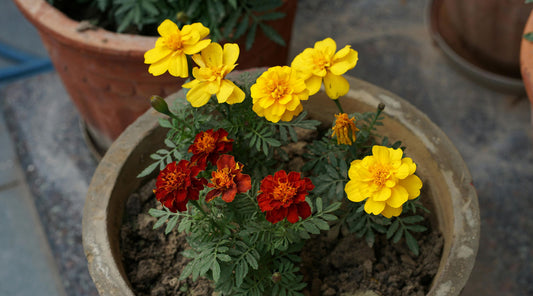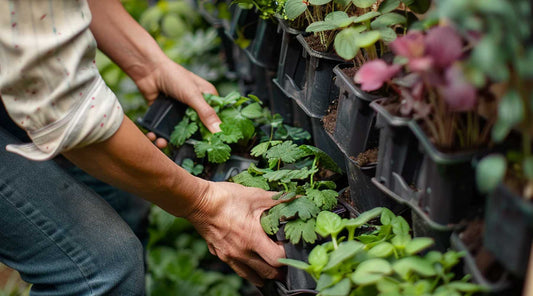Gardening is a wonderful way to unwind, connect with nature, and beautify your surroundings. However, for many of us, the idea of spending hours every week on garden upkeep can be overwhelming. Enter the low-maintenance garden—a dream come true for anyone who loves plants but has limited time. With the right tools and techniques, you can create a garden that looks great and requires minimal effort. This guide will show you how to get started with your own low-maintenance garden, perfect for busy weekends.
The Benefits of a Low-Maintenance Garden
A low-maintenance garden is all about maximizing beauty while minimizing effort. By making smart choices in design, plant selection, and gardening techniques, you can reduce the time spent on tasks like watering, weeding, and pruning. This approach is ideal for busy individuals who still want to enjoy the benefits of a garden, such as a peaceful outdoor space, a habitat for wildlife, and a touch of greenery that enhances the curb appeal of your home. Plus, a low-maintenance garden is not only easier to manage, but it can also be more sustainable, as it often involves water-saving techniques and the use of hardy, drought-resistant plants.Key Principles of Low-Maintenance Gardening

- Choose the Right Plants: Opt for hardy, drought-tolerant plants that thrive in your local climate. Native plants are usually the best choice, as they require less water and are more resistant to pests and diseases.
- Use Mulch: Mulching is a game-changer for reducing weeds and conserving soil moisture, which means less watering and weeding for you.
- Smart Irrigation: Install efficient watering systems like drip irrigation or soaker hoses to ensure your plants get the water they need with minimal waste.
- Limit Lawn Space: Lawns require regular mowing, watering, and fertilizing. Consider reducing lawn space and replacing it with ground covers, gravel, or low-maintenance plants.
- Start Small: A garden box or vertical planter is a great way to start gardening with limited space. Yard Butler’s Yard Tree has 3 hangers and two plant rings to accommodate a variety of garden ideas.
Essential Tools for a Low-Maintenance Garden
Having the right gardening tools can make all the difference in maintaining a low-maintenance garden. Here are some must-have tools to keep your weekend projects manageable:- Ergonomic Hand Tools: Invest in ergonomic hand tools like Yard Butler’s Terra Tuff tools, a line of double-duty trowels, diggers, and weeders that are comfortable to use and reduce strain on your hands and wrists. Look for tools with padded grips and lightweight designs.
- Efficient Watering Systems: A drip irrigation system or a soaker hose is essential for delivering water directly to the roots of your plants, reducing water waste and the time you spend watering. Automated timers can be added to these systems to ensure consistent watering even when you’re away.
- Weed Control Gadgets: A good quality Rocket Weeder or a hand weeder like the Terra Weeder can help you tackle unwanted plants with minimal effort. These tools allow you to remove weeds without bending over or using harsh chemicals.
Choosing the Right Plants for Minimal Upkeep
Plant selection is crucial in a low-maintenance garden. Focus on plants that are well-suited to your local climate and soil conditions. Here are some tips for choosing the right plants:- Drought-Tolerant Plants: Succulents, lavender, and ornamental grasses are excellent choices for dry climates. These plants thrive with little water and can withstand periods of neglect.
- Perennials Over Annuals: Perennials return year after year, reducing the need for replanting. Consider hardy perennials like echinacea, sedum, or hostas that require little care once established.
- Native Plants: Plants native to your area are adapted to the local climate and require less water, fertilizer, and pest control. They also support local wildlife, including pollinators like bees and butterflies.
Techniques for Efficient Watering
Watering is one of the most time-consuming tasks in gardening, but it doesn’t have to be. Implementing efficient watering techniques can drastically reduce the time you spend on this chore. Here’s how:- Drip Irrigation Systems: Drip irrigation delivers water directly to the plant roots, minimizing evaporation and runoff. It’s an efficient way to water your garden, especially during dry periods.
- Soaker Hoses: Like drip irrigation, soaker hoses slowly release water along their length, ensuring that the soil is evenly watered without waste.
- Hose Reels: Your hoses will last much longer if stored properly on a free standing or wall-mounted hose reel. Keep them out of the yard and free of twists and kinks.
- Rain Barrels: Collect rainwater in barrels and use it to water your garden. This eco-friendly option reduces your water bill and helps conserve resources.
Mulching: The Key to Weed Control and Moisture Retention
Mulch is a low-maintenance gardener’s best friend. It suppresses weeds, retains soil moisture, and improves soil quality as it breaks down. Here’s how to use it effectively:- Choose the Right Mulch: Organic mulches like wood chips, bark, or straw are excellent for retaining moisture and adding nutrients to the soil. Inorganic options like gravel or landscape fabric can be used in areas where you want to prevent weeds without adding organic matter.
- Apply Generously: Spread mulch about 2-3 inches deep around your plants, ensuring it doesn’t touch the stems. This depth is sufficient to block light from reaching weed seeds and keep the soil cool and moist.
Smart Pruning and Deadheading Tips
One of the best ways to keep your garden looking neat without a lot of work is to choose plants that require minimal pruning. Here are some tips:- Minimal Pruning: Select plants that maintain a tidy shape without frequent pruning, such as evergreens or compact shrubs. For plants that do need occasional pruning, such as roses, focus on late winter or early spring when they’re dormant.
- Deadheading-Free Plants: Some plants, like daylilies and coneflowers, drop their spent flowers naturally, reducing the need for deadheading. If you do need to deadhead, do so as part of a quick walk-through of your garden, rather than setting aside a large chunk of time.
Time-Saving Tips for Weekend Gardeners
Even with a low-maintenance garden, there are still tasks that need to be done. Here are some tips to keep them manageable:- Set a Schedule: Dedicate specific times for garden maintenance, such as early morning or late afternoon on weekends. Breaking tasks into smaller, manageable chunks can make them feel less overwhelming.
- Use a Garden Caddy: Keep your essential gardening tools in a portable caddy or tool belt so you can move easily from one area of the garden to another without constantly going back to your shed.
- Quick Tasks: Focus on quick, 15-minute tasks like watering pots, pulling a few weeds, or deadheading flowers. These small efforts add up and keep your garden looking great without requiring a significant time investment.
How to Maintain Your Low-Maintenance Garden Tools
Proper care of your gardening tools is essential to their longevity and effectiveness. Here’s how to keep them in good condition:- Clean After Each Use: Wipe down your tools after each use to remove dirt and moisture, which can cause rust.
- Sharpen Blades Regularly: Keep your pruners, shears, and other bladed tools sharp to make cutting easier and reduce plant damage.
- Store Tools Properly: Store your tools in a dry, sheltered area to protect them from the elements. Hanging tools on a wall or storing them in a garden shed helps prevent damage and keeps them organized.
- Oil Tools at the end of the Season: Boiled linseed oil is great for protecting tools from moisture during storage.
Conclusion: Enjoy Your Garden with Less Effort
A low-maintenance garden is the perfect solution for those who love gardening but have limited time to devote to it. By choosing the right plants, using efficient tools, and implementing smart gardening techniques, you can create a beautiful, thriving garden that requires minimal upkeep. This means more time for you to relax and enjoy the fruits of your labor.Bonus Ideas for Enhancing Your Low-Maintenance Garden

- Garden Lighting: Solar-powered garden lights add ambiance and require no wiring or electricity.
- Seating Areas: A comfortable bench or chair lets you sit back and enjoy your garden after a busy day.
- Bird Feeders and Baths: Attract birds to your garden with feeders and baths that require little maintenance but add life and movement to your space. The Yard Tree bird center allows you to place multiple feeders and a birdbath in a small space.







